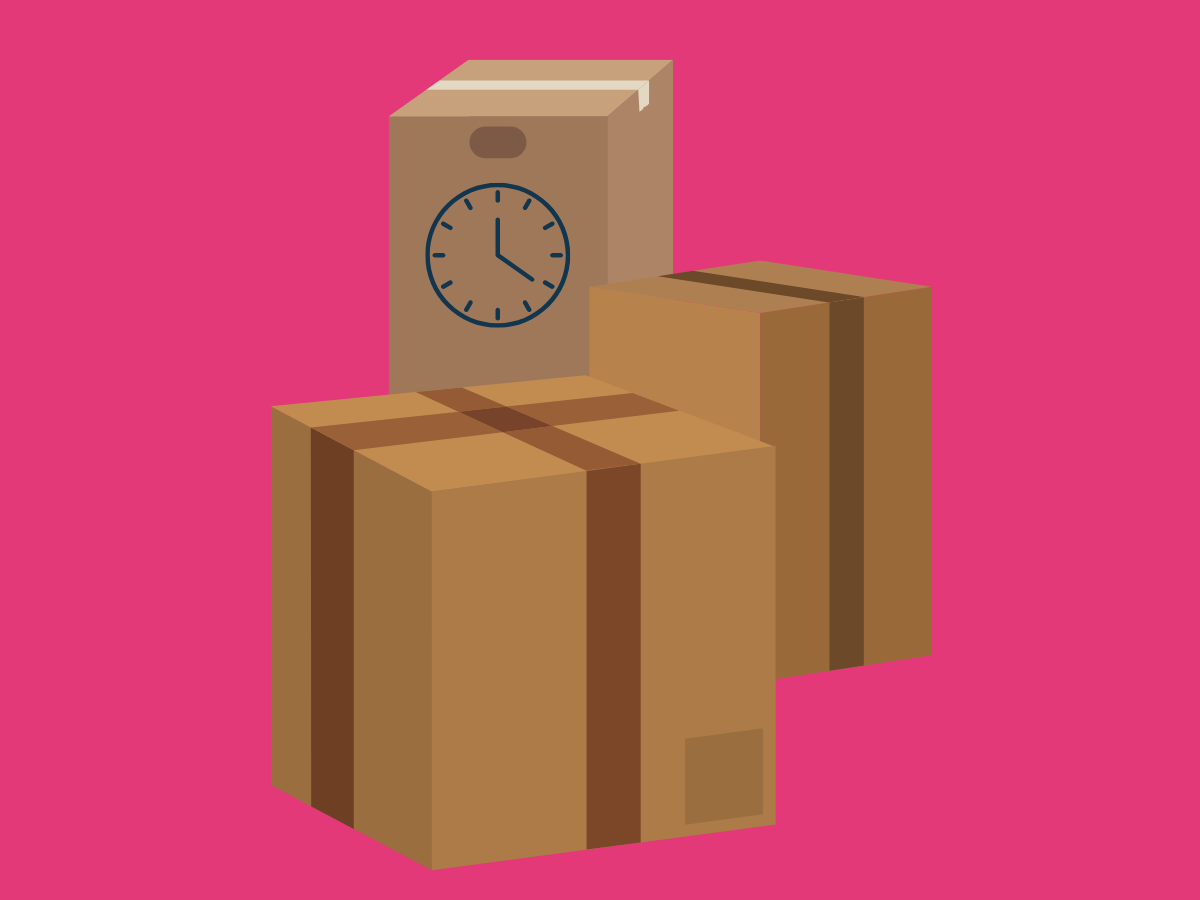Your back-to-school promotions timeline
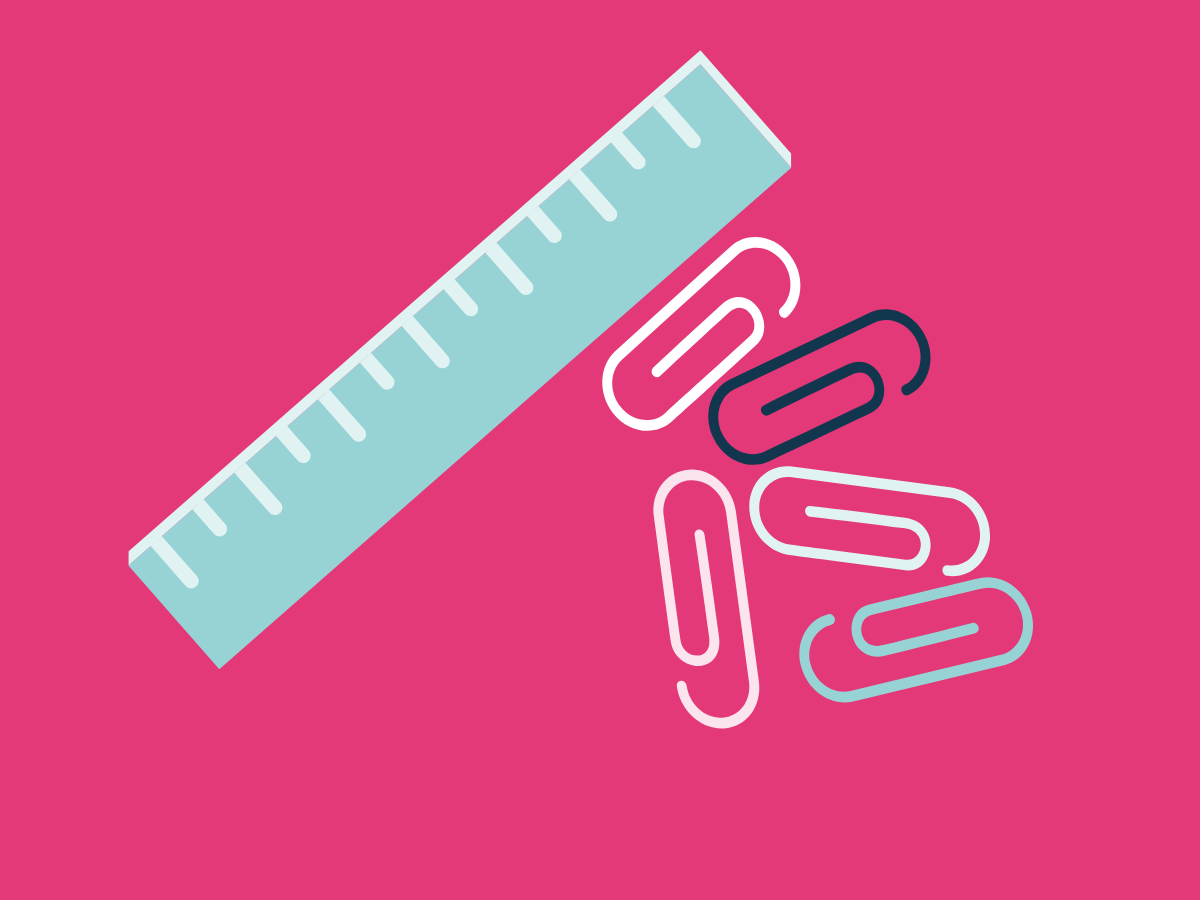
Is your back-to-school campaign just another discount disguised as strategy? Are you targeting "students" like they're one homogeneous group? Do you think September 1st is when back-to-school shopping starts?
Most eCommerce marketers treat back-to-school like Black Friday's awkward cousin. They slap "student discount" on everything and hope for the best. Meanwhile, 54% of total revenue comes from discounted products, which means your promotional strategy needs precision, not spray-and-pray tactics.
The reality is more complex. Parents drive most purchasing decisions. Shopping happens in waves, not a single surge. And the biggest opportunities often come after school starts, not before.
Here's how to build back-to-school campaigns that optimize conversions and actually drive profitable growth.
Reality check: What most retailers get wrong
Most back-to-school campaigns fail because they ignore basic eCommerce CRO principles.
The timing trap
Retailers launch everything in late August when competition peaks and customer acquisition costs skyrocket. Data shows that during challenging trading periods, discount activity increases significantly across the industry. You're joining a crowded market at the worst possible time.
The demographic trap
"Student discount" campaigns ignore that parents control most education-related spending. According to the National Retail Federation, families with students in elementary through high school plan to spend an average of $858.07 on clothing, shoes, school supplies and electronics, down from $874.68 in 2024. Students themselves rarely have this kind of budget.
The platform trap
Most campaigns treat mobile and desktop users identically. Yet mobile commerce behavior peaks during school hours when students browse between classes. Your eCommerce platforms need different optimization strategies for different devices and times.
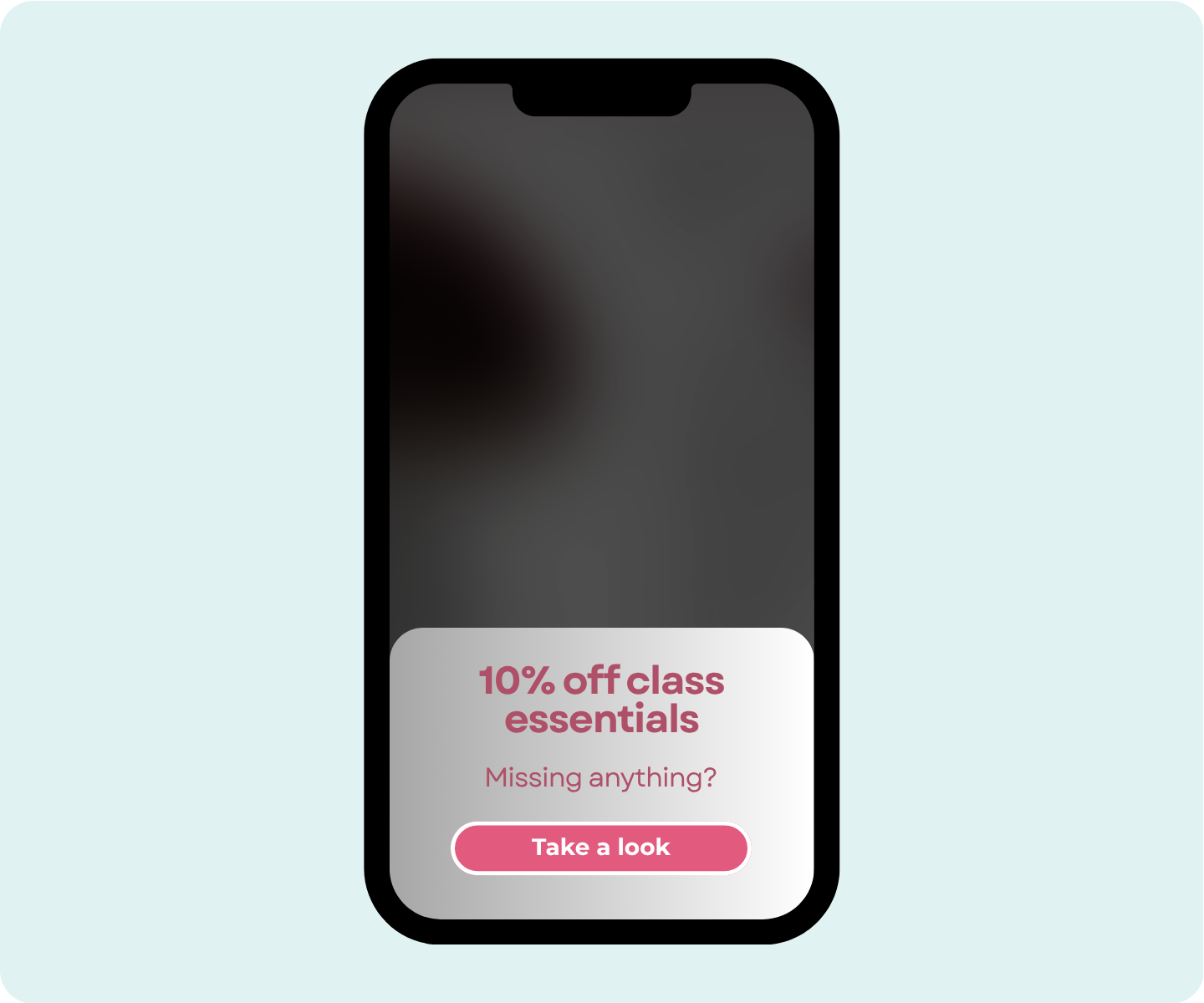
The back-to-school timeline that actually converts
Smart eCommerce marketers understand that back-to-school isn't a single event. It's a three-month conversion opportunity with distinct customer behaviors.
July: The early prep phase
This is when parents shop without kids. They research big-ticket items and compare prices methodically. Desktop conversions dominate. Shopping cart abandonment rates are lower because they have time to complete purchases.
What works for optimization
Early bird email campaigns targeting existing customers drive sales. Stretch & Save offers ("Spend $100, save 15%") align with bulk-buying mentality. These campaigns can increase average order value by 23%, similar to results seen in successful retail personalization strategies.
Product bundling reduces decision fatigue. Instead of individual item discounts, create "Freshman Dorm Essentials" or "High School Starter Packs." This simplifies the customer experience while protecting margins better than percentage-off promotions.
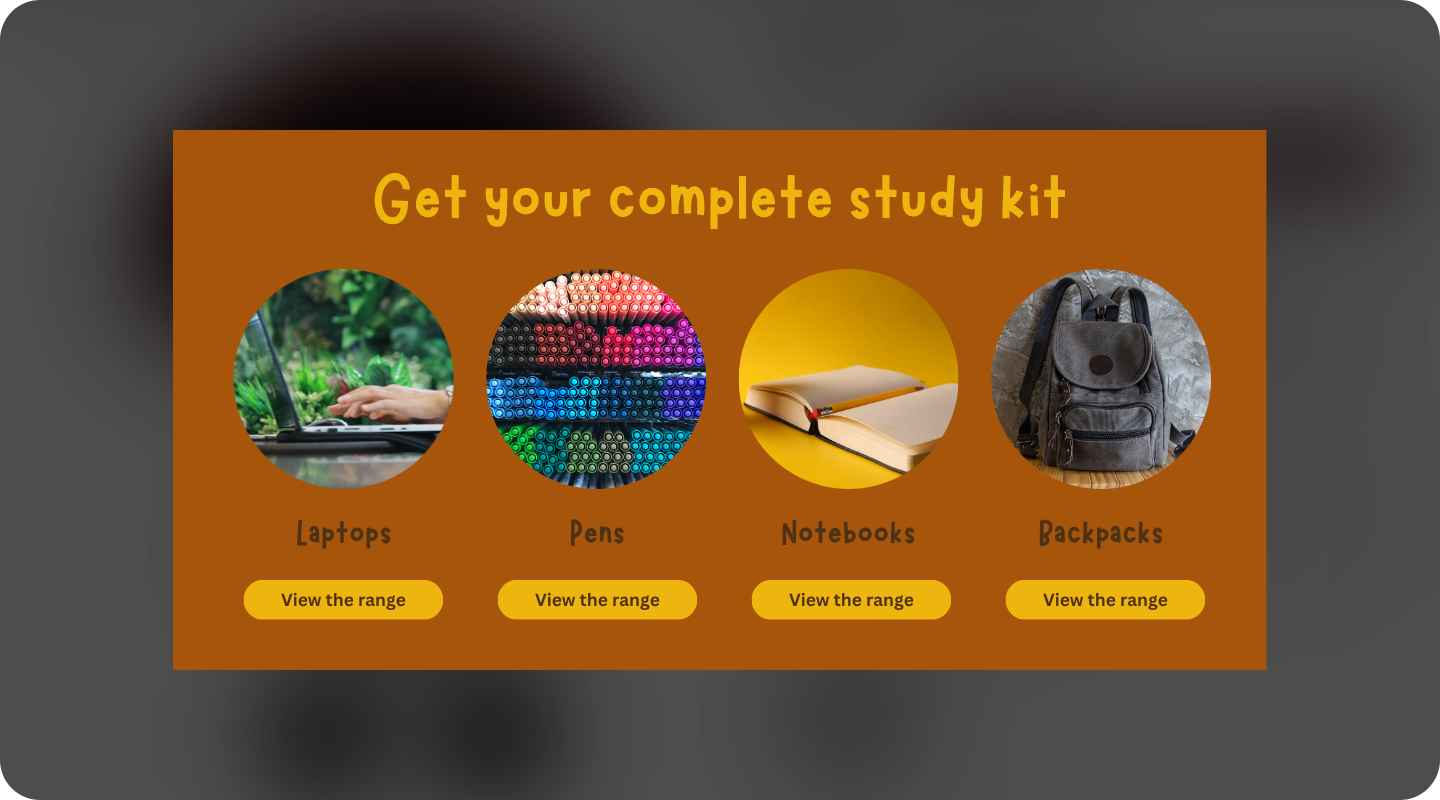
August: The panic buying surge
Late August brings desperation shopping. Parents realize they forgot items. Students panic about dorm needs. Mobile traffic spikes as people shop during lunch breaks and commutes.
Conversion rate optimization becomes critical. Exit-intent overlays can recover 15-25% of abandoning sessions when properly targeted. Limited-time offers create genuine urgency without training customers to wait for discounts.
Research shows that 30% of revenue comes from orders using voucher codes. Smart retailers use this behavior strategically with invalid code campaigns that trigger when someone tries to use an expired or fake discount code.
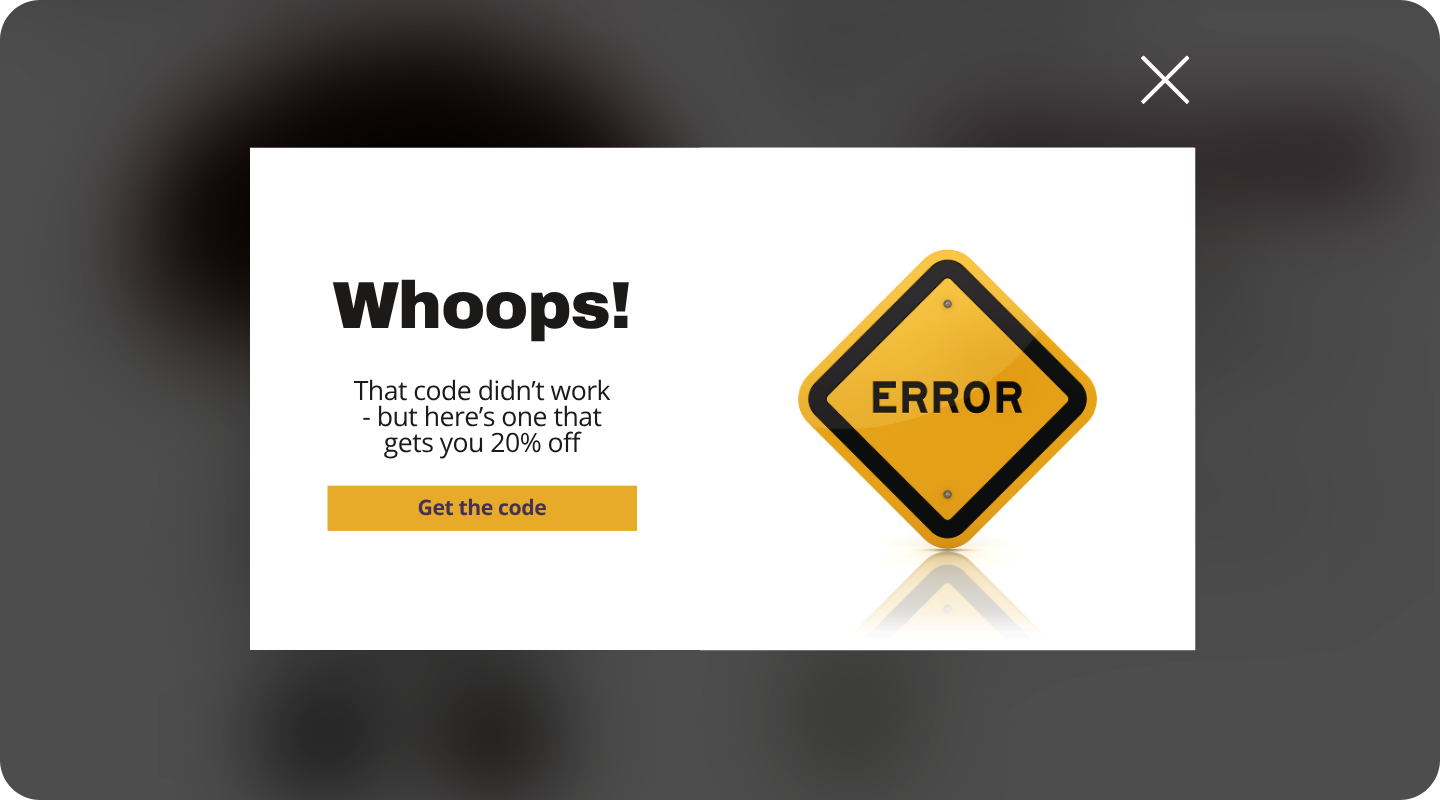
September: The forgotten opportunity
Most retailers shut down back-to-school campaigns after Labor Day. This is backwards thinking.
September brings replacement purchases, forgotten items, and first-paycheck spending from college students. Competition drops while genuine need remains high. This creates optimization opportunities with lower customer acquisition costs.
Cross-selling becomes highly effective. Someone buying a replacement laptop charger might need a laptop bag. Someone replacing lost headphones might want a phone case. The key is behavioral targeting, not demographic assumptions.
Segmentation strategies that drive conversions
Generic "student" targeting ignores distinct buying behaviors and budget constraints.
- Elementary parents shop in bulk during specific windows. They prioritize value and durability over trends. Their shopping cart behavior shows longer research phases but higher completion rates once decided. Personalization should focus on quantity discounts and practical benefits.
- High school students influence purchases but rarely control budgets. They browse extensively on mobile but often purchase on desktop (using family computers). Social proof matters more than price for this segment. Customer experience optimization should emphasize reviews, user-generated content, and aspirational messaging.
- College students have genuine budget constraints and shop independently. They convert best on mobile and prefer simple checkout processes. Their shopping behavior shows high cart abandonment rates due to price sensitivity. Exit campaigns and stretch-and-save offers can improve conversions significantly.
- College parents make expensive one-time purchases with careful consideration. They research extensively across multiple sessions before converting. Retargeting campaigns and personalized email sequences work well for this audience.
Campaign mechanics that optimize spend and conversions
The most effective back-to-school promotions align with natural shopping behaviors rather than fighting them.
What works
Stretch & Save for bulk buyers works because it increases revenue per customer while providing perceived value
Instead of "20% off everything," try "Spend $75, save $15." This protects margins while encouraging larger basket sizes. Analysis shows that targeted offers can increase AOV by 23% while maintaining profitability.
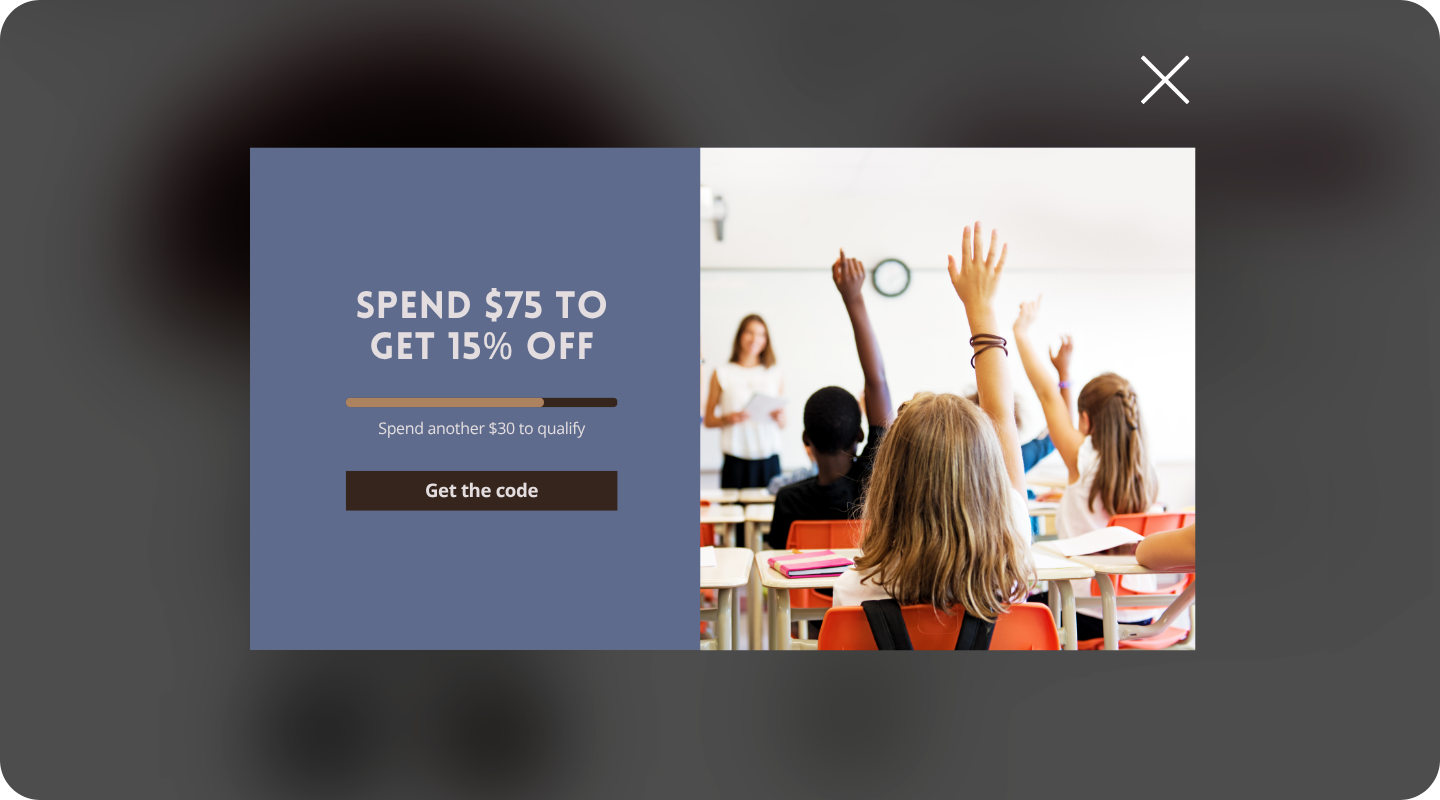
Limited-time offers for procrastinators capitalize on urgency without devaluing products
48-hour flash sales in late August catch panic buyers when they're most likely to convert. These work best with countdown timers and mobile-optimized checkout flows.
Bundle deals for convenience appeal to time-pressed parents who want to complete shopping quickly
"Everything for Freshman Move-In Day" bundles can command premium pricing while delivering genuine value. This approach increases conversions by reducing decision fatigue.
Cross-sell based on cart contents becomes highly effective during back-to-school because purchases are often incomplete
Someone buying notebooks might need pens. Someone buying a laptop definitely needs a case.
Timing your promotions for maximum impact
Successful back-to-school campaigns require different approaches at different times, not a single month-long discount.
- Early bird strategy in July targets planners with value propositions rather than urgency. Email campaigns to existing customers perform best. Focus on big-ticket items where comparison shopping happens. Desktop optimization matters more than mobile during this phase.
- Rush week tactics in late August require mobile-first thinking. Exit-intent overlays for cart abandoners can recover significant revenue. Express shipping promotions remove the final barrier to conversion for panic buyers.
- Post-rush cleanup in September uses scarcity positioning differently. Instead of "limited time," try "limited stock" messaging. Ctrl+C campaigns (triggered when users copy product names to search elsewhere) work well for price-comparison shopping.
Messaging that converts rather than confuses
Most back-to-school copy sounds like it was written by someone who's never bought school supplies.
Skip the excitement angle. Parents aren't excited about spending $890 on supplies. They're stressed about budgets and logistics. Students are anxious about fitting in and performing well. Your messaging should acknowledge reality.
What works
Focus on problem-solving - "Everything they actually need for freshman year" works better than "Get ready for the best year ever!"
Emphasize convenience over savings - "Free shipping before move-in day" solves a real logistics problem. "One less thing to worry about" acknowledges parental stress. Convenience messaging often outperforms discount messaging for this audience.
Optimizing your ecommerce platforms for seasonal success
Back-to-school campaigns stress-test your technology and reveal optimization opportunities.
Mobile checkout optimization becomes critical in August when mobile traffic spikes. Reduce checkout steps, offer multiple payment options, and ensure forms work properly on small screens.
Inventory management integration prevents overselling popular items during peak demand. Nothing destroys customer experience like ordering a required textbook that's actually out of stock. Real-time inventory updates and waitlist options maintain conversions even when stock runs low.
Personalization engines should adjust recommendations based on shopping patterns. July browsers might want different products than August panic buyers. Dynamic content based on user behavior improves relevance and conversions.
Measuring success beyond basic conversions
Traditional conversion metrics miss important back-to-school performance indicators.
Track average order value by segment rather than overall AOV. College parents should show higher values than high school students. If they don't, your targeting needs adjustment.
Monitor customer acquisition cost by channel during peak periods. Social media costs typically spike in August. Email and direct traffic become more valuable. Adjust budget allocation accordingly.
Analyze repeat purchase behavior post-campaign. Back-to-school buyers often become valuable long-term customers if the initial experience is positive. Customer lifetime value matters more than first-purchase metrics.
Cart abandonment rates by product category reveal optimization opportunities. High abandonment on expensive items might indicate payment option limitations. High abandonment on low-value items suggests checkout friction.
Common mistakes that kill conversions
The discount trap assumes students expect discounts. While research shows that voucher codes are powerful for driving conversions, leading with percentage-off signals low value. Focus on solving problems first, incentivize second.
The inventory trap involves promoting items you can't fulfill quickly. August buyers need items fast. Promote what you can deliver reliably rather than your full catalog.
The personalization trap treats all students identically. A freshman buying their first laptop has different needs than a graduate student replacing equipment. Your customer experience should reflect these differences.
The timing trap involves running identical campaigns throughout the season. July planners and August panic buyers need different approaches. One-size-fits-all promotions miss both audiences.
The optimization opportunity most retailers miss
September and October represent the biggest missed opportunity in back-to-school marketing.
While competition disappears, genuine need continues. Students discover missing items. Parents realize what they forgot. College students get their first paychecks and upgrade basic purchases.
This creates perfect conditions for intelligent promotions. Lower acquisition costs. Less competitive pressure. Clear purchase intent.
Smart retailers extend back-to-school campaigns through October with different messaging and mechanics. Instead of "back-to-school savings," try "semester essentials" or "dorm room upgrades." The need remains but the positioning changes.
The goal isn't to join the back-to-school promotional noise. It's to solve actual problems for people making necessary purchases under time pressure.
Your customers will thank you for the clarity. Your profit margins will thank you for the strategy.



